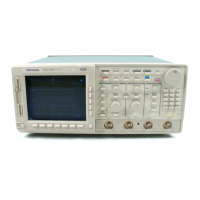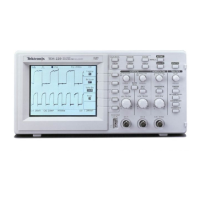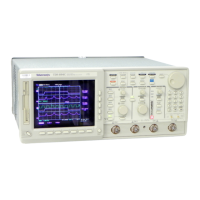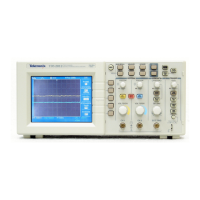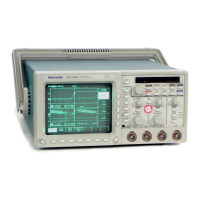Getting Started
1–2
TDS Family Oscilloscope Programmer Manual
Zoom
Zoom
Commands Grouped in Functional Areas Commands Listed Alphabetically
ACQuire? (Query Only)
Syntax: . . .
Group: . . .
Examples: . . .
ACQuire:MODe
S
G
E
ACQuire:NUMACq? (Query Only)
S
G
E
Acquisition Commands
ACQuire:MODe
ACQuire:NUMACq?
ACQuire:NUMAVg
ACQuire:NUMEnv
ACQuire:REPEt
ACQuire:STATE
ACQuire:STOPAfter
Alias Commands
A
A
A
A
A
A
A
Application Menu Commands
A
A
A
A
A
A
A
and
Figure 1–2: Functional Groupings and an Alphabetical List of Commands
The program may request information from the oscilloscope. The oscilloscope
provides information in the form of status and error messages. Figure 1–3
illustrates the basic operation of this system.
The Status and Events section (Section 3) starting on page 3–1 describes how to
use service requests (SRQs) and various event messages in your programs.
Digitizing Oscilloscope (Rear Panel)
Your program requests
status and event reports.
TDS sends status and event reports.
GPIB Cable
Controller
Figure 1–3: Service Requests (SRQs) Provide for Event (Interrupt) Driven Programs
The Programming Examples section (Section 4) starting on page 4–1 describes
some example digitizing oscilloscope programs and how to compile them. The
disks that come with this manual (Figure 1–4) have an executable and a
Microsoft QuickBASIC 4.5 and a Microsoft QuickC 2.5 source code version of
each program.
Status and Events
Programming Examples

